You might be wondering that a motor mount is just a piece of aluminum bracket that holds the engine intact, how impactful can it be? Well, yes part of that statement may be correct but you’re still missing the bigger picture. A motor mount can be far more complicated in practice. The important question should be: what are bad motor mount symptoms?
- What Is A Motor Mount
- Motor Mount Function
- Motor Mounts Location
- Causes Of Bad Motor Mount
- Bad Motor Mount Symptoms
- Motor Mount Replacement
- Motor Mount Replacement Cost
- Conclusion
- FAQs
To understand bad motor mount symptoms on a better level, first, we need to have a clear view of how exactly a motor mount works. Their types. Their functions. And their causes.
Only then would we be able to determine why bad motor mount symptoms occur in the first place.
What Is A Motor Mount
The engine is not a single unit nor does it operate independently. The engine is connected with (and to) a series of other components and mounts that make it operate as a whole unit. Without these mounts (and components) it’s just an engine on a metal frame. A motor mount is among these ‘mounts’ that allow the engine to function as smoothly as possible.
Simply put, motor mounts are a series of rubber bushings that attach the engine to the vehicle’s subframe. Some may not know, but an engine moves around quite a lot in the engine bay under excessive acceleration (or deceleration). This is the result of the forces being created within the engine cylinders like the engine firing order or the amplified piston movement.
There are several different types of motor mounts distributed through the vehicle’s engine bay. How many? Well, that depends on several factors like your car’s model, your car’s engine size, and even its drivetrain. That said, all these mounts have the same sole job which is dampening the engine vibrations entering the cabin.
So, with that out of the way, let’s shift our focus to some more important things at hand. The motor mount functions.
Motor Mount Function
Typically, one would assume that to make the engine intact, it should be welded directly to the vehicle’s chassis. Yes, that might be true if you are up to an appalling ride experience. This is because the engine vibrations will then directly be passed on from the vehicle’s frame to the vehicle’s occupants. That’s not how things should work.
First of all, you need to think of the engine as a wild, raging beast. It never settles down and it’s certainly not tame. As soon as it gets power, it pounces. This is why components such as (motor) mounts exist. They help contain the engine from extreme movement (caused by excessive torque). This is the reason why you’d see bigger engines having more motor mounts to hold the engine in place.
Ultimately, a lot of vibrations are created from the engine compartment. This is where the motor mount comes in. Because it attaches the engine to the subframe, the vibration is dampened with the help of the rubbers. As a result, minimal or few engine vibrations enter the car’s cabin.
A typical motor mount comprises a couple of metal plates surrounding a block of rubber. Basically, it’s just a block of rubber. That’s all it is. And as we know, rubbers are the best material when it comes to vibration insulation. Therefore, it acts as an excellent vibration insulator for the vehicle. By absorbing these vibrations, these mounts account for a comfortable driving experience.
Also, this is why a motor mount eliminates the possibility of using (only) metal plates as a form of vibration insulator. Doing so would cause the metal plates to clash against the steel subframe of the car. And, the engine would produce clanking noises which are certainly not pleasant to the ear at all.
Types Of Motor Mount Settings
There are two types of settings that a motor mount can be set to. Car manufacturers either choose between the softness and firmness level of the rubber for the motor mounts.
So, a firmer motor mount (rubber) accounts for higher engine stiffness, thus restricting engine movement. On the other hand, a softer rubber (setting) will allow the engine to move more freely.
Also, there is an opportunity cost between a soft and firm motor mount setting.
A firm mount limits the engine movements for the sake of better car handling. But, it is at the cost of more vibrations since the firm rubber allows some vibrations to pass through. Typically, sports cars (or racecars) use this setup for less body roll through the corners. Hence, allowing them to rocket through a corner with ease.
Similarly, a softer motor mount also has an evident trade-off. A softer mount will allow the rubber mount to absorb more vibrations, hence, making the ride more comfortable. However, by allowing the engine to move that freely, the car will eventually generate body roll, which compromises the car’s handling. Soft motor mounts are typical in luxury cars that demand more comfort than performance.
As technology keeps on progressing, newer and newer types of motor mounts are being developed. Most modern cars use a combination of both soft and firm settings in the form of hydraulic motor mounts. Luckily, for you, we’ll be discussing that next.
Types Of Motor Mounts
There are a plethora of motor mounts to choose from. In fact, we’d run out of space discussing each and every single one of them. Therefore, we will distribute these types into more important ones in the car industry.
1. Traditional Rubber Motor Mounts
These types of motor mounts make use of solid rubber enjoined by a couple of metal plates. These plates help the mount to adjust to varying conditions by providing more flexibility. Yes, these rubber mounts look dated but they help in bringing down the production costs as compared to other engine mounts.
The only place where rubber motor mounts exceed the other motor mounts is in reliability. Because these mounts are less complicated, they can last (almost) a lifetime. Typically, rubber motor mounts can be found in cheaper cars and agricultural vehicles like tractors and harvesters because of their low costs.
2. Hydraulic Motor Mounts
As the name suggests, the hydraulic motor mount uses hydraulic fluids in a hollow chamber in the mount itself. It – like all other motor mounts – is also made from rubber and some metal plates. Its job is quite simple, yet complicated. its sole job is to dampen the noise (and vibrations) being generated by the engine by absorbing the different frequencies.
That’s not all though. Unlike a traditional rubber motor mount, the hydraulic mount absorbs both kinds of NVH (Noise Vibration Harshness) frequencies. High and low. As a result, it can provide better sound and vibration insulation to the car’s occupants.
That said, a hydraulic motor mount can be very unreliable and has a much shorter life than a traditional motor mount. Sometimes, the fluids may tend to leak, which can be very expensive in the long run given their price. Likewise, the leaking fluids may also cause harm to the other engine components in the form of corrosion (unless you’re keen on learning how to fix rust on a car).
3. Polyutherane (PU) Motor Mounts
A Polyutherane motor mount is the same as a rubber motor mount. Except it doesn’t have rubber. Instead, it mixes different types of plastics to make a piece of a block (mount). Installing these PU mounts is as easy as ABC. There are even DIY videos that explain step-by-step guides to making a homemade PU mount.
These Lego-like components provide more stiffness than a traditional rubber motor mount. The stiffness found in the PU mounts can massively enhance a car’s handling. You can definitely feel every crack and every bump on the road. Also, comparatively PU mounts are found in (cheap) built cars that are made for the track such as a Miata or a Civic.
The amount of vibrations instantly becomes evident especially when the car is idle. Even though the PU mounts may suit performance cars well, they should not be used in normal everyday-driven cars. Unless, of course, you are looking for a back injury.
Motor Mounts Location
Typically, an FWD drivetrain car would have 4 – 5 motor mount locations. Two on either side of the wheels. One right before (and underneath) the engine. The last one, also known as the ‘torque engine mount’, can be found in front of the engine and just before the radiator.
Back and forth engine movement can result in torque loss. This is where torque mounts come in use. With the help of their location, torque engine mounts avoid the engine from rocking back and forth. In this way, these mounts help in countering the torque steer in FWD cars.
That said, not all (FWD) cars have the same motor mount locations. Some may even have two mounts while most (modern) cars have more than three motor mounts.
However, In terms of front motor mount location, RWD cars tend to have fewer of them. Instead, RWD cars use a combination of back-mounted motor mounts as well as front motor mounts. You can locate the rear mounts on the rear axle’s differential.
Causes Of Bad Motor Mount
Abusive use of machinery, be it the vehicle’s suspension, tires, or even the vehicle itself can result in serious accidents and mishaps. These components are made to withstand limited abuse. However, when that limit is crossed, these components become vulnerable and frail. Also, understanding these causes will help us later on while discussing the bad motor mount symptoms.
Motor mounts are very sensitive that is if it has had a harsh life. Here are some of the ways that can lead to a bad (or broken) motor mount.
1. Harsh Driving
A vehicle that is going through significant abuse is more likely to have stress on its engine accessories. Driving too fast over potholes and speedbumps can break components such as suspension and especially motor mounts. These mounts are specifically designed to endure a limited amount of abuse. So, putting unnecessary pressure on mounts can break the rubber hence causing them to fail.
2. Usage Over Time
Even though (rubber) mounts can last a lifetime, still, there’d come a time when these would need to be replaced. Most manufacturers advise owners to change the vehicle’s motor mounts after 100,000+ miles. Dust, rust, and wear are all some of the factors that can harm the rubber on a motor mount which causes cracks amongst them.
3.Excessive Heat
In rare cases, a motor mount can be affected by the extremely hot temperatures produced by the engine. Sometimes, motor mounts are located right next to catalytic converters (and exhaust manifolds) which produce temperatures of up to 200 degrees. The excessive amount of heat causes cracks in a motor mount’s exposed rubber. Hence, a broken motor mount.
Symptoms Of A Bad Motor Mount
We saw how exactly the motor mount functions as well as its types. We saw how important a role these mounts play in the driving dynamics of a car including all the performance aspects. This gives off the importance of a motor mount in the general functioning of a car.
Yes, you can drive a car without having any motor mounts and save a couple of hundred bucks. But then again, you’d be up for a very bad driving experience. For those interested in saving their engine from collapsing, here are some of the signs that indicate a bad motor mount.
1. Clunking Noise From Engine Bay
Hearing a loud knocking sound from the engine bay whenever you put your car into ‘drive’? Well, that is because of a broken motor mount. That knocking sound indicates that the engine is moving around in the engine bay. The torque that the engine produces causes it to move back and forth and hence the engine clashes against other metal accessories.
2. Rattling Noises
Since the mounts are either broken or have completely failed, there is no rubber to dampen the engine vibrations. As a result, high vibrational frequencies cause the engine to shake a lot. Eventually, it crashes against other pipes and chambers like the exhaust or even the vehicle’s subframe.
Engine rattling noises are the most notable symptoms of a bad motor mount sound. If these vibrations are evident to you, the car’s motor mount has likely broken. Some cars having bigger engines rattle to an extent where you feel as if sitting directly on an engine.
3. Broken Engine Belts
Because a broken mount causes frequent back and forth engine movement, sometimes, the engine belts snap right out of place. Or worse, they may even become damaged, which can put the engine under a lot of stress. So, if your engine (or conveyer) belt doesn’t stay in place, it’s probably because of too much engine movement caused by the broken mount.
4. Car Veers Off
A bad motor mount will make your car veer off to either side. This mostly occurs in FWD drivetrain cars. A car’s suspension and engine go hand in hand. So as the engine moves the engine torque goes to the suspension, which causes the car to tug on either side upon acceleration.
Also, while this may be because of a bad alignment or an uneven tire pressure, it is mostly because of a broken motor mount.
5. Misaligned Engine
Car manufacturers set the vehicle’s engine to a specific alignment for optimal weight distribution. A broken motor mount disturbs that alignment hence improper weight distribution. Also, this puts a lot of pressure on either side of the car and causes excessive tire wear. So, if your car is going through body roll and lousy handling, a bad motor mount may be one of the reasons behind it.
6. Engine Vibrations
One of the quickest (and easiest) ways to spot a broken motor o mount is engine vibrations. in lower RPMs (or idle speed) the engine tends to vibrate more. This is because, at low RPM, the vibrational frequencies are low but its duration (pulses) is long hence being more obvious.
On the other hand, the frequencies become much higher but with shorter intervals as the car passes a certain RPM. Eventually, these frequencies are smoothened out by the engine torque, resulting in lesser vibrations.
When the mount goes bad, the vibration intensity increases by a great margin, especially in lower RPMs.
7. Damage To Chassis And Sub-Frame
Abnormal engine movement, caused by broken motor mounts, puts the sub-frame (or chassis) under significant pressure. The engine is certainly not light and even a strong piece of metal (or steel) can hardly withstand it.
Eventually, this can cause cracks (and misalignment) within the frame holding the engine together. So, if you spot any cracks in your car’s subframe, it’s likely because the motor mounts have gone bad.
Motor Mount Replacement
Replacing an engine mount can be an expensive and strenuous task. Some older cars have fewer motor mounts compared to the ones found in modern cars. However, you should not replace motor mounts on cars that have multiple motor mounts throughout the engine. It’s best to leave them for the professionals.
Filled with electronics and other various components, a modern car engine is very complex in nature. These engines are unlike older engines. They are far more technical and replacing even a small component requires complete disassembly of the engine. Therefore, it is highly not recommended to replace motor mounts for these engines alone without professional guidance.
However, it is relatively easier to replace the motor mounts in cars that have few of them. Follow these steps to replace an engine mount.
Locate the specific engine mounts that need replacing. Next, jack up the car by placing the jack right underneath the car’s engine. It is important that you should jack up the engine of the vehicle, not the structure of the car. This relieves the motor mount from the engine load pressure. By doing so, it becomes easier to un-mount the mounts and avoid the engine from collapsing.
Next, remove any wiring harnesses or components in the way. This should give you clear access to the motor mount and its bolts. Next, remove the bolts attached to the motor mount’s heatshield and then safely pry out the motor mount. (Repeat the same step for all other broken motor mounts).
Compare the old and new motor mounts to determine if they are alike. Now, reverse the previous step by rejoining the removed wiring harnesses (if any) and attaching the bolts back in place. Now that the mounts are back in place, lower the jack and you’re good to go.
Motor Mount Replacement Cost
A typical motor mount replacement costs anywhere between $300 to $2,000. But then again, it depends on your vehicle’s make, model, type, and engine size. Also, other motor mount factors can influence a motor mount repair cost, such as the motor mount type and the number of motor mounts.
For instance, the motor mount repair cost of an Audi A6 is between $700 and $800. Whereas, the motor mount repair cost for an Audi A8 sits between $1,000 and $1,100. So, the more luxurious and high-tech your car is, the higher your overall motor mount replacement cost would be.
If one keeps in mind all the bad motor mount symptoms, these costs can easily be avoided. A motor mount only goes bad if your car has gone through a harsh life. Most people ignore the knocking noises coming from the engine. Little do they know that these noises will come back to haunt them in the form of a long bill!
Conclusion
In this article, we discussed what exactly a motor mount is as well as its function. Then we shed some light on the different types of motor mounts and their settings.
Then, we focused on more important aspects like the bad motor mount symptoms. This made us realize how important a role these rubber components can play in the driving dynamics of a car. the replacement procedure showed us how simple it is to replace a motor mount on some older vehicles.
FAQs
What Is A Motor Mount
Simply put, a motor mount is a piece of rubber component enjoined by some metal plates that act as a connection between the car’s engine and the frame. These mounts exist for the sole purpose of cushioning the engine vibrations and holding the engine steady. By doing so, they help in providing the car’s occupants with a comfortable and soothing driving experience.
How Long Does It Take To Replace Motor Mounts
Depending on how many motor mounts there are in your car, and where they’re located, the time may differ. Some cars have motor mounts embedded deep underneath the engine for which you would have to disassemble the whole engine. This requires more labor hours. Some take minutes while others take hours just to replace a single motor mount.
What Are The Symptoms Of A Bad Motor Mount
Factors such as loud clanking noise, engine misalignment, car veering off, abnormal engine vibrations, and rattling noises are all bad motor mount symptoms.
What Causes Motor Mounts To Go Bad
A rubber can sometimes be very fragile and susceptible to break. In fact, the rubber motor mounts found in cars have to go through extreme abuse and temperatures. That said, it is very rare for a new car’s motor mount to fail in a short span of time. These mounts are as sturdy as they come. So, reasons such as harsh driving, extreme temperatures, and usage over time, can cause the motor mounts to cause harm to that rubber. Eventually, the rubber develops cracks and it starts to fall apart.
How Many Motor Mounts Does A Car Have
There’s no direct answer as to how many motor mounts a car may have. It entirely depends on your car’s model, make, and even the trim level. That said, most (modern) FWD cars tend to have about five front motor mounts distributed throughout the engine compartment. All of them do the same job which is to provide support to the engine and offer comfort to the car’s occupants.

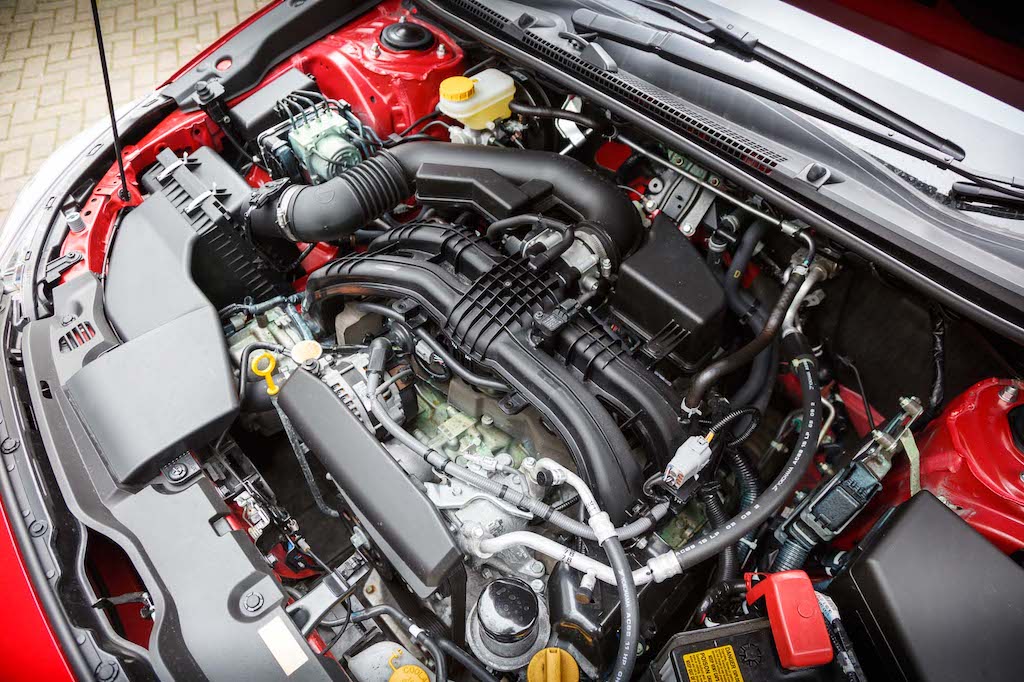


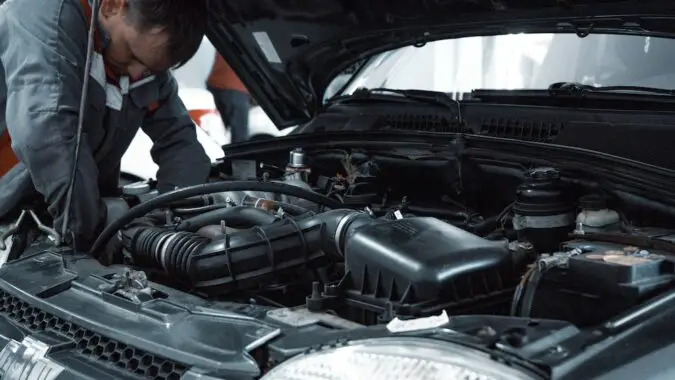
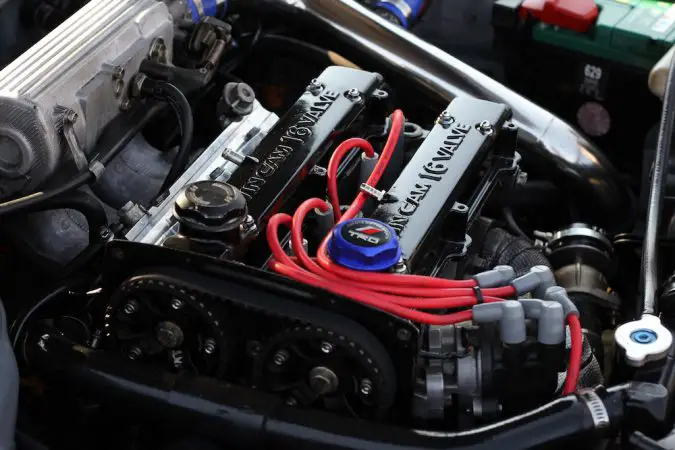
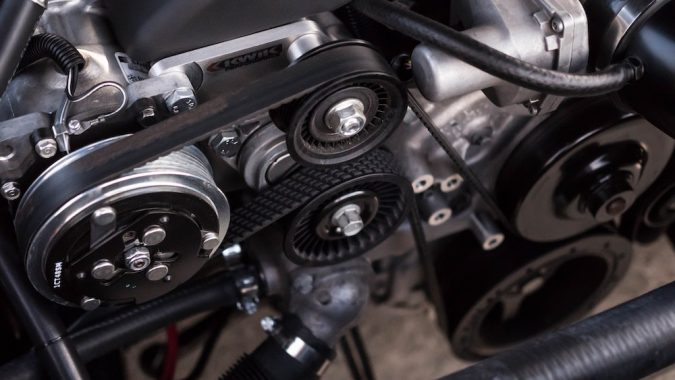
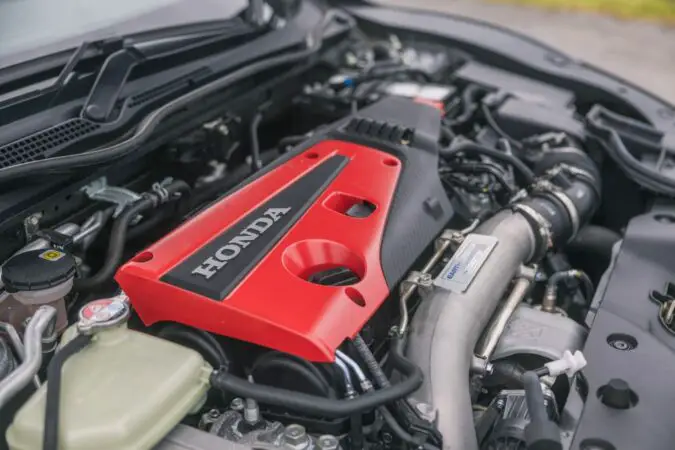
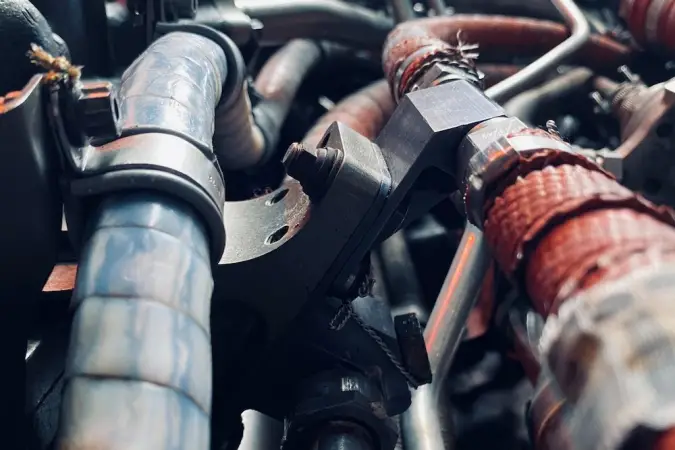
1 comment
anti-vibration rubber mounts protect the engine and other metallic parts from jerks,